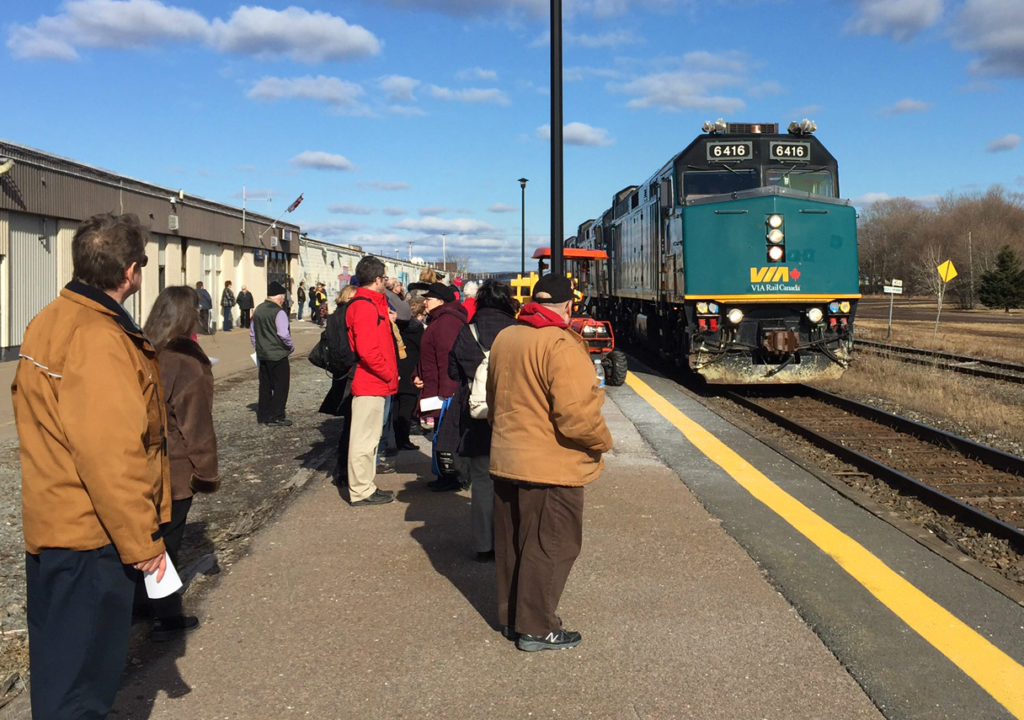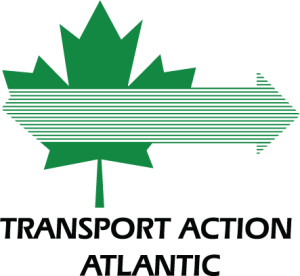By Marcus Garnet
On Friday, December 1, 2017, Halifax Regional Municipality’s Integrated Mobility Plan was released to the public as an agenda item for consideration by Committee of the Whole Council. On December 5, 2017, Council unanimously endorsed the plan – a move hailed by active transportation advocates as a culture shift towards improving walking, cycling and public transit in Halifax.
According to the staff cover report, the Halifax Integrated Mobility Plan recognizes that an upward trend of traffic can result because new roads induce new traffic by attracting residents and businesses to outlying areas and enticing transit users to switch to vehicles. It has become clear that no city or region can build its way out of vehicle congestion, unless road improvements are accompanied by pricing signals (such as tolls) or strict land use controls to avoid encouraging disbursed car-dependent land use patterns. The theme of integration permeates the document, and recognizes the need at three levels:
- Transportation options: Many trips involve two or more modes of transportation. Seamless and barrier-free connections between and amongst modes, convenient transfer facilities, and coordinated timing to minimize delays and make trips more enjoyable.
- Land Use plans, policies, and initiatives: Investment in integrated mobility should be used as a tool to help shape the region and its communities. The aim is to strengthen strategic Growth Centres, respect established neighbourhoods, and complement the open-space system.
- Municipal departments and orders of government: Different agencies have different priorities, and must be encouraged to work together so that the decisions of each reinforce the overall aim of reducing vehicle dependency.
The plan is oriented to four core concepts, or “pillars”:
- A connected transportation system links people and communities with each other and with important goods, services, and employment opportunities. Many people face complex commutes to juggle activities like work, school, errands, childcare, shopping, and social life. “Transit Oriented Development” (TOD) will encourage shops and services closer to home, work and transit terminals, while enhancing the quality of life that attracts investment to the region. “Complete Streets” in strategic locations will give priority to pedestrians, bicyclists, and public transit, and be designed for all ages and abilities.
- A healthy regional transportation system supports comfortable, convenient, and safe opportunities for active living and offers transportation options for all ages and abilities, including people with physical, visual, auditory, or mental disabilities. Physical activity can improve mental and physical health and help prevent disease. The way communities are designed affects whether people can choose active forms of transportation and build physical activity into their daily lives. The way transportation infrastructure is designed can help reduce collisions and injuries.
- A sustainable transportation system protects air, land, and water resources, respects the needs of all people, and uses financial resources wisely. Financial stewardship must also consider the effects that transportation investment has on land use, and how the resulting land use in turn affects municipal spending. Sustainable transportation is also socially responsible, and considers the needs of all community members, including children, seniors, low income residents, and people with mobility challenges. Moreover, sustainable transportation must be environmentally responsible. Promoting walking, bicycling, and transit and planning for Complete Streets which welcome all ages and abilities can lower emissions, reduce the demand for sprawling development, and help protect environmentally sensitive areas.
- An affordable transportation system offers value for money both to the user and the taxpayers by recognizing the economic costs and benefits which may otherwise be overlooked. Walking, bicycling, taking transit, and car sharing are affordable options. Loan and insurance payments, fuel, and vehicle maintenance add up to a significant cost. Also, public investment must provide value for taxpayers by providing attractive alternatives to driving, while helping shape future development to encourage walking, bicycling, and transit use.
The four pillars are served by guiding principles drawn from best practices in other regions and reflecting much of what was heard during three rounds of public consultation which included 22 public meetings, some smaller pop-up consultations and three questionnaires:
- Complete Communities – Cluster communities around public transit, employment, shops, and services: Convenient walking distance reduces the need for vehicle ownership, parking facilities, and roadway capacity. Higher densities must be coupled with pedestrian supportive design, open space, and a sensitive transition to established neighbourhoods. Clustered development can also facilitate local goods delivery by offering a central point for convenient pick-ups and drop-offs as online shopping continues to grow.
- Move people and goods, instead of focusing solely on vehicles: Vehicles will always be important, but their end purpose is to move people or goods. Focusing on the number of people using a transportation corridor recognizes that there are more efficient, affordable, and environmentally responsible mobility options than private cars. This points to the importance of “Complete Streets” designed for all ages and abilities and accommodating all users including pedestrians, bicyclists, and public transit as well as vehicles. For goods movement, focusing on the type and volume of goods rather than simply on trucks, encourages options ranging from bicycle couriers to rail and marine freight.
- Manage congestion instead of attempting to eliminate it: Widening a roadway encourages more people to drive on it, unless unpopular tolls are charged. Ferries, commuter trains, bus rapid transit, and a connected active transportation network may shift the overall congestion level somewhat lower, but they will not eliminate it. Rather, these forms of “higher order” transit offers a means to avoid congestion. Roadway congestion then helps encourage people to switch to the improved transit, enhancing its viability even as it acts as a “safety valve” to prevent road congestion from becoming intolerable for those who must drive.
- Integrate solutions: There is no one solution to solve mobility problems, but taken together, several different solutions can reinforce each other so that the sum is greater than the parts. Conversely, some apparently obvious solutions could undermine others – for example, an expanded roadway could erode the potential ridership of a transit service. Recommendations for integrated mobility must be evaluated and implemented as a coherent suite, rather than chosen in isolation. This points to the importance of sharing these principles with other transportation agencies in Halifax, such as the Province, Halifax Harbour Bridges, and the Port of Halifax.
The plan provides five key deliverables:
- Strategies to shift more trips to active transportation and transit to reduce the proportion of commuter trips made by private automobile from nearly 80% currently, to 70% or less by 2031. Data suggests that the region has become more, rather than less car dependent since 2006, so this trend needs to be reversed. Substantive and meaningful shifts in mobility demands will require new thinking.
- A clear process for making decisions and setting priorities: Accommodating the needs of travellers, businesses and residents involves trade-offs. For example, viable higher-order transit requires a commitment to focus residential density, shops and services within a short walk of each terminal, while bus-only lanes or other transit priority measures often require the removal of on-street parking or a reduction in car capacity.
- A staged plan to develop affordable mobility: The Plan identifies a vision, sets objectives, and recommends policies and actions to achieve the vision. Some of these require only minimal spending, while others are relatively expensive but offer benefits reaching beyond mobility to include efficient land use and socioeconomic benefits.
- Early actions followed by longer-term recommendations: The Plan embraces a fourteen-year horizon (to 2031), but identifies specific strategic actions that can be taken today. These will help “set the stage” for future decisions by signaling new directions and providing early benefits for trips made using sustainable transportation modes.
- Baseline performance measures to monitor success over time: The project has identified a need for more systematic data collection and compilation. To address this, the Plan recommends collaboration with universities and other agencies for measuring and analyzing trip patterns.
Here are some highlights of the Plan’s recommendations:
A network of Transit Priority Corridors to enable transit vehicles to bypass congestion using methods ranging from traffic signal priority to dedicated bus lanes.
Design and implementation of dedicated bus lanes along Bayers Road, Young Street, and Robie Street to provide Bus Rapid Transit between Mainland North and Peninsula campuses and hospitals. This method of providing bus service will be the first of many improved bus corridors in Halifax.
Continued discussions with potential partners with a view to implementing a commuter rail service between Cobequid Road, Bedford, and Halifax as a catalyst for higher-density suburban Transit Oriented Development and downtown employment. There are also long-term recommendations to consider a potential in-street downtown rail extension.
A commitment to review land use regulations to encourage compact, pedestrian-supportive, mixed use “Complete Communities”clustered around existing and potential transit terminals, including potential commuter rail stations in the Bedford-Halifax corridor.
A mandate to change municipal design guidelines (the “Red Book”) to enable Complete Streets with increased priority for pedestrians, bicyclists, and public transit, with designs which are sensitive to the needs of all ages and abilities.
A timeframe to complete major sidewalk connections by 2020, on portions of Herring Cove Road and Dutch Village Road.
A commitment to complete priority Active Transportation Greenway connections, and an interconnected All Ages and Abilities (“AAA”) Regional Centre Bicycle Network by 2022.
Increased use of Transportation Demand Management and information technology to reduce the need to travel.
Potential partnerships to improve suburban and rural mobility, including new carshare locations and approaches for accommodating pedestrians on rural highways in village centres.
Educational materials for the public and developers explaining the relationship between design, density, transit, and affordability, with interim design guidelines for use by developers and investors. New directions in the IMP must be clearly explained. Inspirational and educational materials can influence decision making long before regulatory changes are adopted.
A commitment to adopt a curbside priorities approach for the Municipality in order to help guide decisions related to curbside space within the right of way.
Evaluation of any planned, new additions, or major improvements to the regional road network under a lens that includes using the evaluation scorecard that takes into consideration the four pillars: connected, healthy, affordable, & sustainable.
The direction contained in the Integrated Mobility Strategy is meant to be a framework for amending the existing Regional Plan and developing new planning documents to implement the Integrated Mobility Plan direction. In adopting the plan for this purpose, Council would direct staff to include it in a long-term capital outlook, funding options and priorities. At a later date, Regional Council would then discuss the capital outlook and its implications. Specific project approvals would be achieved through future Council decisions on that Long-Term Capital Outlook and annual capital budgets.
In the meantime, the release of the Integrated Mobility Plan for Council consideration is an important milestone and an inspiration for citizens of Halifax and, hopefully, those of other municipalities in Atlantic Canada.







